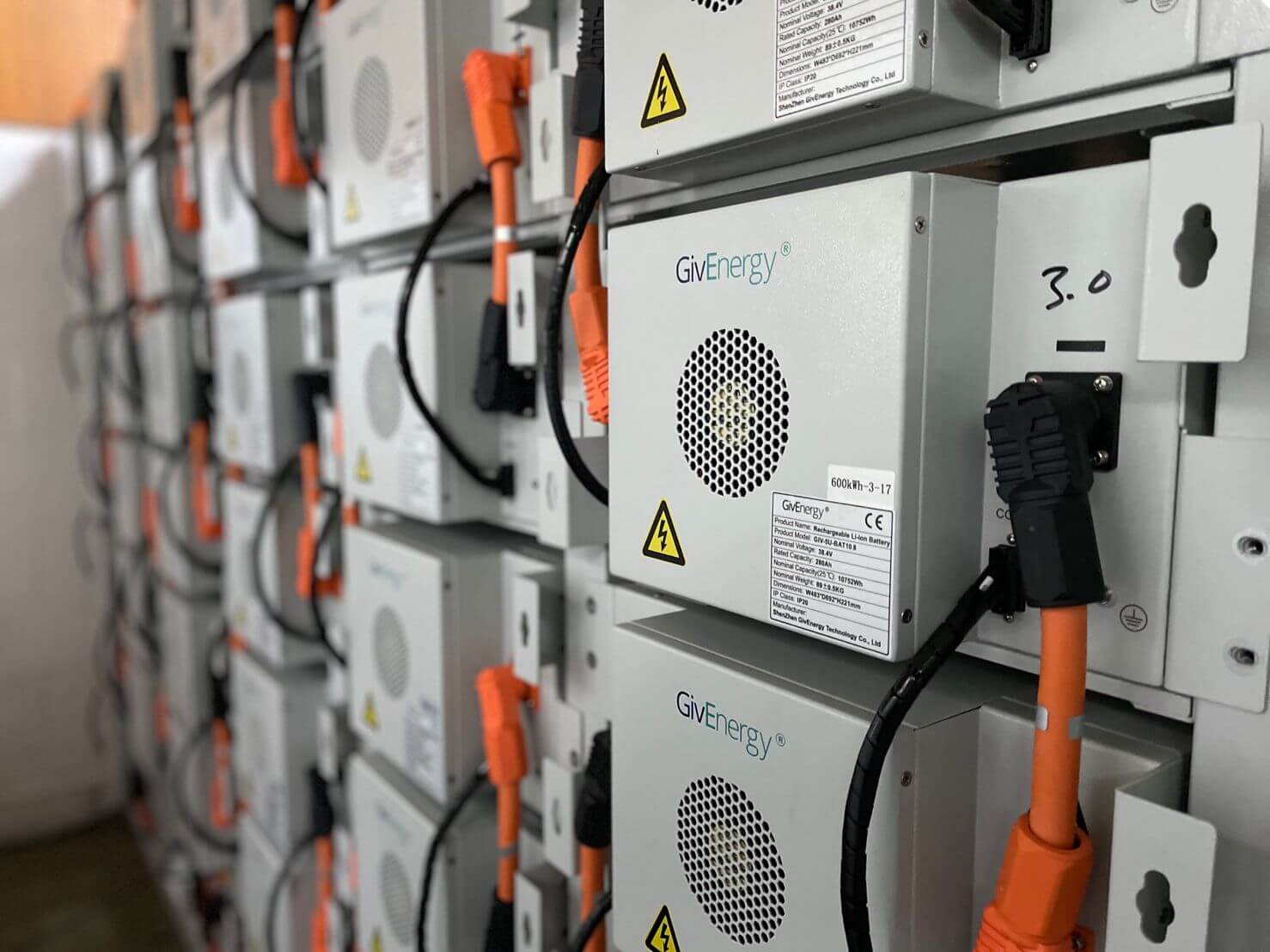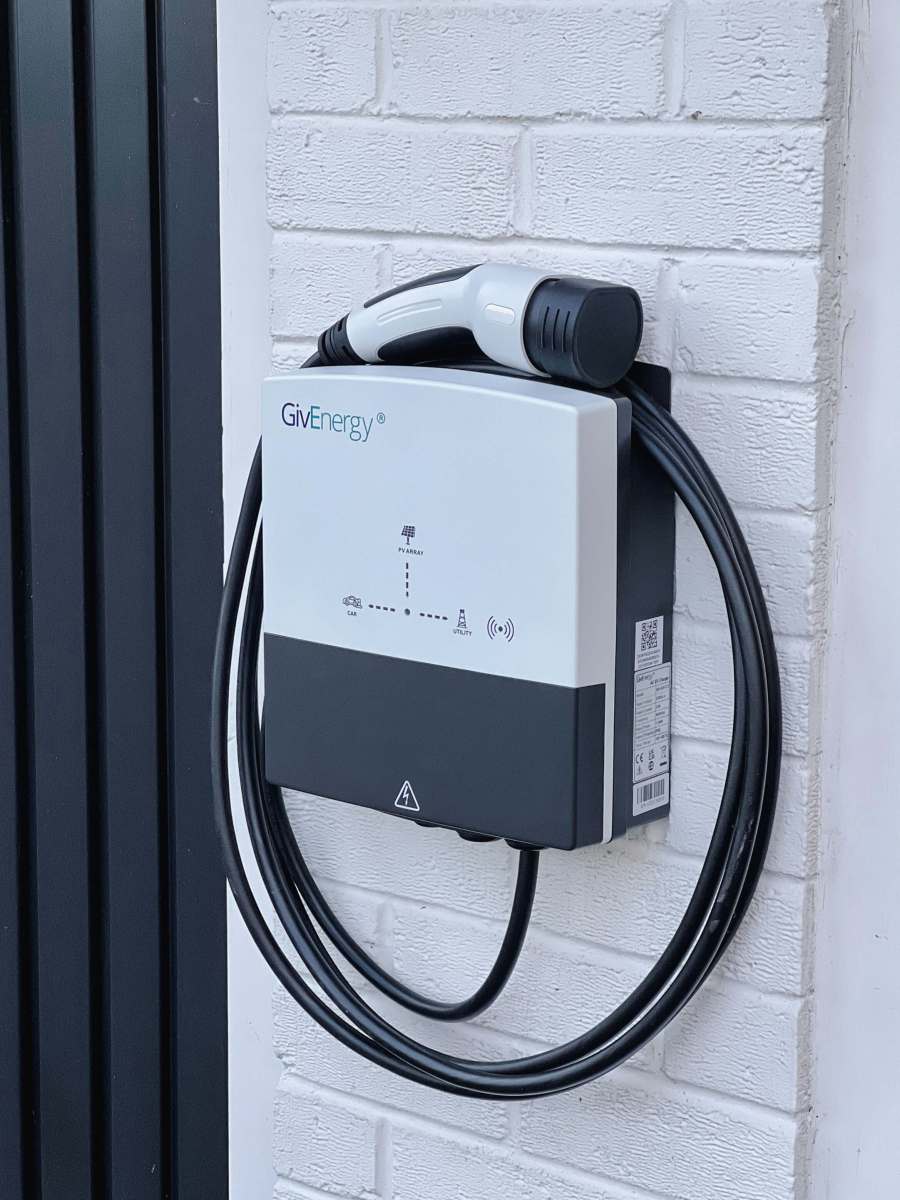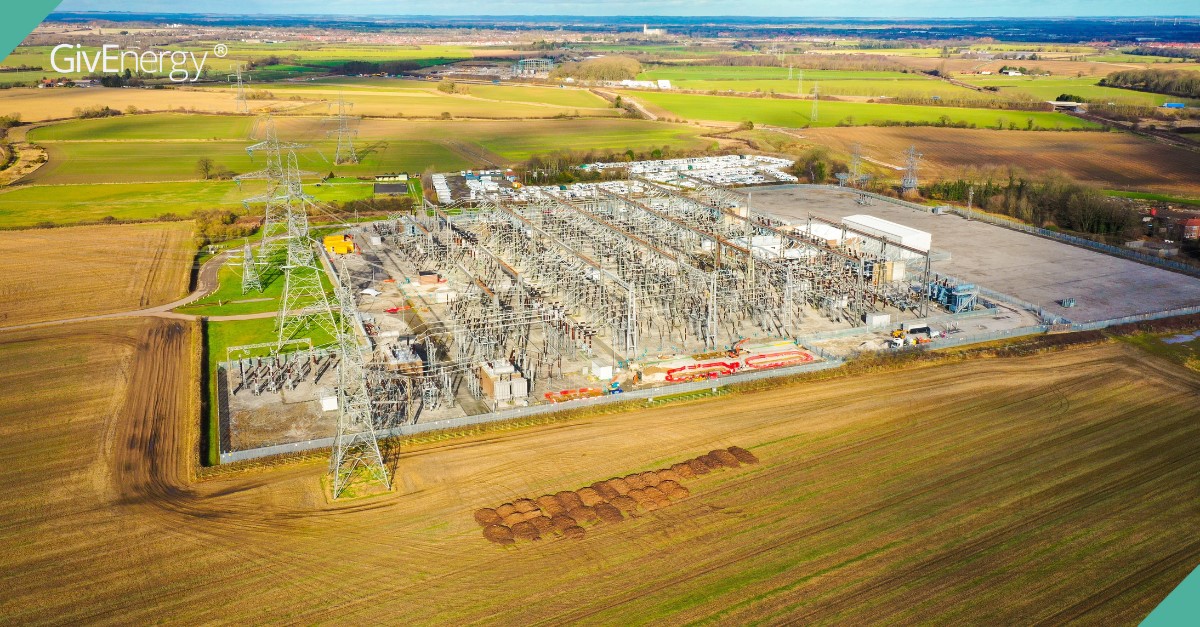The role of grid scale battery storage is becoming ever more important in the UK and across the world.
Why?
Renewables, such as solar and wind, provide clean carbon-free energy. In short, they’re crucial to achieving net zero emissions.


However, they also have hour-to-hour variability. You can’t just turn sunshine and wind on and off as and when required.
That’s where grid scale battery storage comes in.
Batteries can be charged and discharged during periods of off-peak and peak demand, respectively.
Here, we explain what battery storage at grid level means and answer some other key questions.
So, what is grid scale battery storage?
Let’s break it down.
Grid scale refers to something that operates across an entire electrical grid, usually serving an entire nation or region.


This is different to other levels of battery storage such as in homes (domestic battery storage) or businesses (commercial battery storage).
Meanwhile, battery storage simply refers to batteries which store electrochemical energy to be converted into electricity.
So, there you have it. Grid scale battery storage refers to batteries which store energy to be distributed at grid level.
Let’s quickly cover a few other key details.
Grid scale battery storage capacity
There is no definition of what constitutes ‘grid scale’ when it comes to capacity.
Each grid scale battery storage facility is usually measured in megawatts (MW).
Take the UK as an example.
Capacity of the Pillswood battery storage facility in East Yorkshire totals 98MW.
Meanwhile, in the United States, the country’s largest battery storage facility at Moss Landing, California has a capacity of 750MW.

For context, the largest capacity of a GivEnergy battery storage container is 500 kilowatts (kW).
That’s roughly 196 times smaller than the Pillswood battery storage facility.
Storage duration
As with capacity, there is no set definition regarding storage duration.
According to US Energy Information Administration, storage duration depends on how grid scale batteries are used.
It notes the following regarding capacity-weighted average storage duration in megawatt hours (MWh):
- Batteries used for grid services only (stabilising the grid by discharging power for short periods of time) – 1.15MWh
- Batteries used for electricity shifting only (shifting from times of low demand to times of high demand) – 4.15MWh
- Batteries used for both of the above – 2.95MWh
Why is grid scale battery storage necessary?
Renewables & the road to net zero
By law, the UK must reach net zero carbon emissions by 2050.
A key part of this involves transitioning to renewable energy.

Significant progress has already been made on this front. Between 2010-2022, electricity generation from renewables in the UK grew from 26TWh per year to 135TWh.
However, renewables come with challenges, especially the hour-to-hour variability of wind and solar.
In short, the sun and wind aren’t always there exactly when you need them.
Increasing demand for electricity
Add to this another challenge.
Demand for electricity is set to increase.
A report co-authored by Centre for Net Zero estimates annual consumer demand will go up by roughly 50% by 2035.


That’s due to the increase in:
- Electric vehicles and by extension, EV charging – the UK will ban the sale of internal combustion engine vehicles from 2035
- Heat pumps – installation of traditional gas boilers is set to be banned in new build homes from 2025 onwards, while the government aims to install 600,000 heat pumps per year by 2028
That’s where grid scale battery storage comes in
Allow us to explain with a hypothetical example.
The sun is shining on a beautiful British summer’s day. As a result, a large UK solar farm is generating huge amounts of electricity.
However, electricity demand peaks later on in the evening after the sun has gone down.
Fortunately, nearby grid scale batteries can store the energy generated and discharge during peak hours.
In short, grid scale batteries help shift electricity from times of low demand to times of high demand.
What is the current state of grid scale battery storage?
Internationally
According to the International Energy Agency, total installed grid scale battery capacity was 28GW at the end of 2022.
This is forecast to rise to around 967GW by 2030.
In the UK
Total grid scale battery storage capacity stood at a record high of 3.5GW in Great Britain at the end of Q4 2023.
This represents a 13% increase compared with Q3 2023.
The UK battery strategy acknowledges the need to keep growing battery storage capacity.
Here are a few examples of grid scale battery storage facilities in the UK.
Pillswood
- Location – Pillswood near Hull, East Yorkshire
- Connected to the Dogger Bank Wind Farm in the North Sea
- Capacity – 196MWh (enough to power 300,000 homes in Yorkshire for two hours)
Richborough Energy Park
- Location – Sandwich, Kent
- Built on the site of a former coal power plant
- Capacity – 100MWh (enough to power 250,000 homes for an hour)
Alveston wind park
- Location – northeast of Bristol, southwest England
- Stores energy from neighbouring wind turbines
- Capacity – 24MWh
‘What does grid scale battery storage have to do with me?’
Battery storage at grid scale is mainly the concern of government, energy providers, grid operators, and others.
So, short answer: not a lot.
However, when it comes to energy storage, there are things you can do as a consumer.
You can:
- Install a domestic storage battery with renewable technology (usually solar or wind)
- Install a standalone storage battery to charge and discharge during off-peak and peak hours, respectively

Alongside storage at grid level, both options will help reduce strain on the grid as we transition to renewables.
If you want to play your part in the battery storage revolution, find an approved GivEnergy installer today.
Further reading
- What is a microgrid?
- LDES (Long duration energy storage): UK needs to ‘act now’, says new report
- UK battery strategy: 3 key questions answered
- Report: energy demand flexibility can save Britain £5bn a year & unlock 30TWh of renewables
- What is ESS in the energy storage world? 3 key questions answered
- Retrofit storage batteries: the key to reducing demands on grid infrastructure








